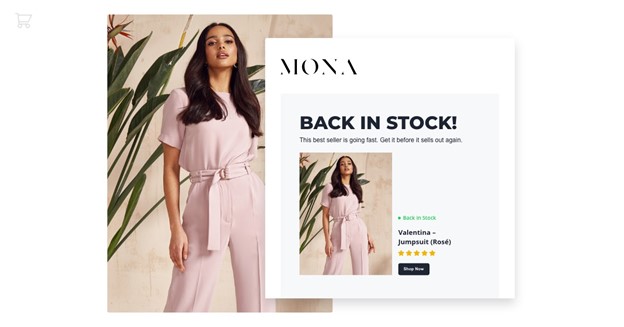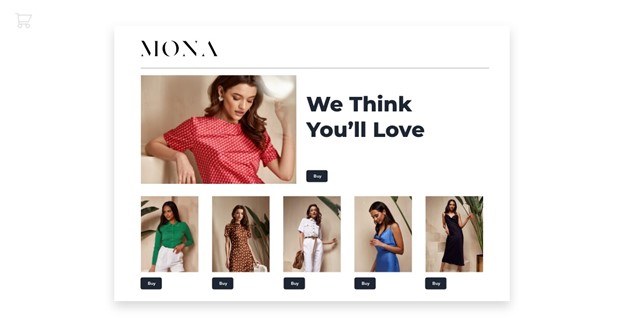5 Ecommerce Email Marketing Tips to 5X Your Conversion Rate
Ecommerce email marketing, or any kind of marketing really, could either be fun and rewarding, or a complete nightmare to manage. Marketing is often viewed as a glamorous side of business, and many people don’t know what really goes into an effective marketing strategy. Make no mistake – it’s totally worth it. But you need to find the right approach to make your email marketing strategy work for your business, leading to high open rates, ROI, conversions, and repeat customers.
So how do you approach it? We’re going to share a few marketing tips and examples of what email messages worked for other ecommerce businesses to give you some ideas on where you can start.
Welcome email: new subscriber
When someone gives you their email address, they’re making a first step towards becoming a customer (sometimes without even knowing it). However, they can easily get disappointed and unsubscribe at any time, so you need to treat every new relationship carefully.
Studies suggest that welcome emails get opened 86% more often than other types of emails. They can also generate 320% more revenue than other promotional emails. Sounds like pretty valid reasons to pay attention to this, doesn’t it?

Here’s what you can do: send them a few links to your most popular content pieces. You already know that those performed well, so they are more likely to be well-received again by a new audience. If they subscribed to a particular topic, send articles or other content marketing pieces that are relevant to that topic. That way your new subscribers will feel like this content was made just for them. That, in turn, will establish trust and positive associations. Maybe even throw in an offer code to entice a purchase?
Welcome email: first-time buyer
Whether it was your content, your offers, or simply your amazing products, you did it! You made a sale, and now is the time to turn that new customer into a repeat buyer and a brand evangelist. Email, once again, can help you with that.

You can level up your email game here and create a welcome series. You only need to set up your email marketing campaigns once, and then automate the process so that each new customer receives it. Each automated email will get sent on its own to the email addresses in your database with the help of marketing automation.
This is about what value you can include in each email. Here are a few examples:
- Related products – if someone purchased a shirt, maybe pants from the same brand would be of interest
- Complementary products – water filter refills for someone who purchased a filter (Pro Tip: send an email with those filters right when the existing filters are about to expire. Timing is everything!)
- Relevant articles – how-to tutorials on how to install a thermostat they just bought (include videos to make it even better)
- Discount for the next purchase (especially for customers who haven’t bought in a while)
- Survey – ask a few short questions to get feedback, give your customers a voice, and learn how to improve (make questions easy to answer to avoid friction)
Abandonment email: browse abandonment
We’ve all been there – we found a new website through social media for example, we visit the site, we look around, and eventually leave. You might think that this customer isn’t interested at all and you shouldn’t spend time trying to convert them. But there’s actually an opportunity here. A revenue-driving opportunity you might miss.
We often think only of our email subscribers as qualified leads. Or at least prospects who added items to their shopping cart. But a window shopper who spent some time on your site is also a sale opportunity.
To understand what made them turn away, you need a way to carefully track their behavior. Maybe the price was too high, maybe their size was out of stock, or perhaps they didn’t find what they were looking for. How would you know?
Sophisticated ecommerce platforms can track all of that and more for you. Here’s what you should look out for:
- People who return to look at the same product a few times
- Customers who check multiple items in the same product category
- Visitors who click on a specific product in an email and arrive at certain landing pages
- Prospects who search for a particular product on your site
Abandonment email: cart abandonment
Abandoned cart emails are very popular, and for a very good reason – they work. Seventy percent of products that customers add to their shopping carts are abandoned. Why? Here are just a few reasons:
- Shipping cost is too high
- Shipping speed is too slow
- Taxes/import charges/other fees are too high
- Customers don’t want to create an account and can’t check out as guests
- Checkout process is too complicated or glitchy
- It’s hard to check out using mobile devices
- Inconvenient payment options
Some of these reasons require you to find a better way of managing your store, inventory, and so on. However, some of these issues are easy to fix, and an email campaign with enticing subject lines can solve the problem. Here’s what you can do:
- Offer alternative products
- Use dynamic design with visually pleasing graphics
- Add humor to your messaging (especially in the subject line to entice users to open your emails)
- Include a sense of urgency to encourage action and even use FOMO as a tactic
Pro Tip: Don’t underestimate the importance of good quality images. Online shopping doesn’t allow your customers to really experience the product (although AR & VR is improving that). That’s why it’s so important to showcase your products in the best light (literally and figuratively). Make sure that your images are high-quality, especially for those customers who’d like to zoom in and examine it in detail. The product should be well-lit, shown from different angles and in different scenarios. For example, include a photo of your product in use in addition to regular white background photos. Place your product in a spot where it would typically be IRL. A water bottle could have a mountain background for avid hikers, a flower pot could be by the window, and so on. Seeing a product in its “natural habitat” often helps consumers envision how they would use it.
Back in stock email
Let’s say that you figured out that a customer was looking for a specific product and left because it was out of stock. Well, you need to tell them when that item is back in stock! That might lead to a very easy sale.

You may want to automate something like that though. Remembering to send back in stock emails, manually finding those clients who wanted to buy this product, and doing that over and over again for each product sounds like a headache. There are platforms that automatically send emails like these as soon as you add an item back to your stock. Yes, you don’t even need to open up your email platform. You just need to set up this action once. Just imagine how much time you can save.
Personalization
A common point of resistance is the myth that email automation leads to lack of personalization. Sending mass emails may seem like faceless mass marketing, and you’re indeed running the risk of appearing that way if you don’t think through your strategy.
To combat that, you can add personalization to every touch point. And we’re not just talking about inserting a [first name] field in your email opening line. By tracking your customers’ shopping behavior (like we described above), you can send them highly relevant recommendations, notify them when their desired products are back in stock, delight them with surprises, and make them feel extra special and taken care of.

You can’t possibly do all of that manually though. But the right marketing automation software allows you to do that exceptionally well.
Increase your conversions
So, you’re sending emails. But how do you know what leads to conversions? Once again, it’s all about tracking your marketing efforts. Every piece of content you produce, every email you send, and every promotion you run has to be measured. Only then will you know what to do more of, and what isn’t worth your time and effort.
So go ahead and try all of these tactics to see what works for your business. After all, no two businesses are the same, so the best way to find your secret sauce is just trying. You may find that some of these work exceptionally well, and others don’t work at all. That’s because your audience is unique, and you know best what will appeal to them. Just make sure that you learn from each experience and always adapt. At the end of the day, it’s not about open rates and single transactions. It’s about long-term relationships that you build with your customers along the way.